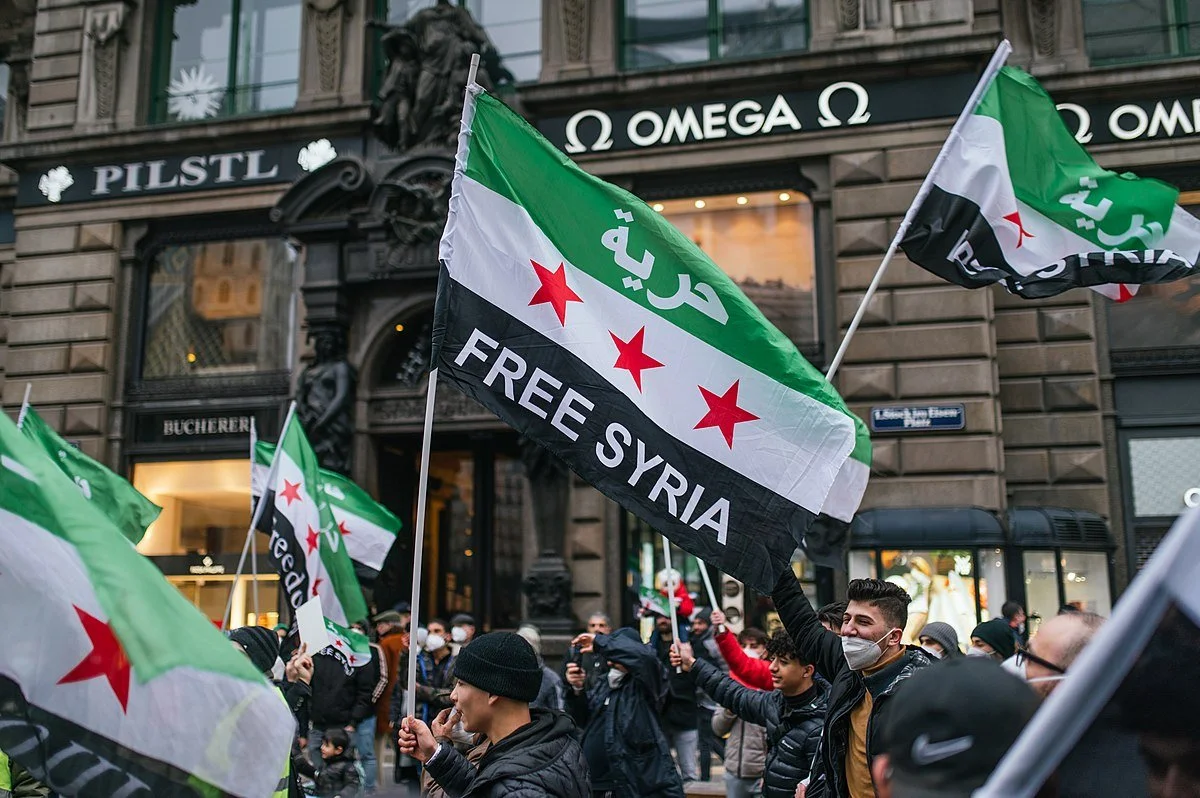The Rugged Road to Syrian Justice
Tamara Himani aruges that the history of Syrian protests against the Assad regime has important parallels and lessons for understanding the ongoing wars between Russia and Ukraine, as well as Israel and Palestine.
Twelve years after revolution first broke out, among a region-wide flourish of democratic uprisings known as the ‘Arab Spring’, the Syrian cause is largely a forgotten one.
International officials issued scathing condemnations and strong-armed their statements with sanctions; but little else was done to bring the Assad regime to heel. The isolated attempts at doing so have largely occurred by coincidence - former regime officials have sought asylum in Germany only to be recognised and tried for crimes against humanity under the principle of extraterritorial jurisdiction. This pattern - of stumbling into justice by sheer accident - has become a precedent over the past couple of years in particular. It appears that in the race to breaking news, whether Russia’s invasion of Ukraine or Israel’s present bombardment of Gaza, several commentators have stumbled over Syrian skeletons along the way.
Russia’s invasion of Ukraine last year brought grim vindication to Syrians who had been warning of Putin’s belligerent and expansionist tendencies for the better part of a decade. Such warnings began with Russia’s formal entry into the Syrian civil war in 2015 to defend President Assad’s authoritarian regime. Russia’s invasion of Ukraine confirmed to the rest of the world what Syria had known for seven horrific years: that Russia was dissatisfied with the geopolitical status quo and sought to expand its influence; and that it would deploy any manner of means - territorial conquest, brutal militias such as the Wagner Group, and indiscriminate bombardment of civilians - in order to do so.
Any blow struck by the Ukrainians against Russia’s military was one duly celebrated by Syrians across the world. Indeed, at the outbreak of war, Syrian rebel fighter Suheil Mahmoud Muhammad - known to friends as ‘Abu Tow’ (the Father of Tow) for his extraordinary use of TOW missile launchers against the regime’s tanks - offered to help the Ukrainians. “There is no difference between destroying Russian tanks and armoured vehicles, whether in Syria or Ukraine…when they are finished in Ukraine, they will continue to kill my Syrian brothers and sisters”, said Abu Tow shortly after the invasion. The death of Yevgeny Prigozhin - along with senior Wagner members, widely believed to be at the hands of Putin in retribution for their attempted coup - was similarly celebrated by Syrians all too familiar with Wagner tactics.
But Russia’s invasion of Ukraine is not the only event to have inadvertently redirected attention to Syria. Following Hamas’ attack on Israel and the Israeli government’s retaliatory current bombardment of the Gaza Strip, disinformation and confusion have dominated social media in the attempt to unpick events on the ground. Amid the tragedy, footage from Syria has often circulated, being mistakenly attributed as either footage of a Hamas attack or Palestinian civilians. In some horrific cases, footage of Syrian children searching for food among rubble has been mistaken with that of Palestinian children trapped under rubble. In others, footage of the Yarmouk Palestinian refugee camp in Syria has repeatedly been confused for one of the 31 Palestinian refugee camps in the occupied Palestinian territories.
This is, perhaps, the worst horror of all: after twelve years of no justice, no peace and no accountability, the ghosts of Syria continue to emerge from the debris of other conflicts. The Ukrainians are showered with Russian cruise missiles, the Palestinians with the Israeli government’s air strikes, the Syrians, it seems, with the re-circulated bodies of their own dead.
Meanwhile, in a stomach-turning renaissance, ‘anti-establishment’ social media accounts such as those of Republican congressman Jackson Hinkle, journalist Richard Medhurst, and news sources Grayzone and MintPress News have enjoyed increased attention given their criticism of Western foreign policy narratives. Long accused of disinformation, such accounts were related to much of the atrocity denialism and conspiracism associated with the Syrian civil war. It is clear that for these figures, actual Arab or Muslim lives are disposable - what matters is whether it is America or Russia sponsoring the killing. Their style of ‘anti-Western’ contrarianism has led them to readily accuse Israel of a host of crimes for which they steadfastly denied Russian or Syrian culpability year after year. As they profit from the replatforming opportunities made available by Palestinian suffering, others online have reiterated that when the bombardment, siege, and deprivation of Arab and Muslim lives unravelled in Syria, such commentators chorused, rather than cajoled, the perpetrators.
Yet atrocity denialism, glaring double standards, and mass disinformation campaigns are not the only features tying these conflicts together. All three governments - Russian, Syrian and Israeli - have used dehumanising rhetoric, describing Ukrainians, Syrians or Palestinians, as ‘Nazis’, ‘terrorists’ or ‘animals’. Azov, ISIS and Hamas became the buzzwords accompanying each air strike, readily deployed by their supporters. Stripped of any agency and bundled in with their extremist minorities, Ukrainians are too often labelled ‘Western-backed puppets’; Syrians, 'Saudi-sponsored jihadists’; Palestinians, ‘Iran-backed terrorists’.
This large-scale dehumanisation has facilitated horrific war crimes: all three governments have bombed hospitals, refugee camps and schools alike, and engaged in forms of ethnic incitement - against Sunni Muslims in Syria, Palestinians in Israel and the occupied territories, and Ukrainians in Crimea, Donetsk, and Luhansk. They have used white phosphorus, a chemical weapon which burns skin through to the bone, and held entire cities under siege (notably Aleppo in 2016). Under the cover of Israel’s bombs, Putin and Assad have seized the opportunity to increase the shelling of Idlib, Aleppo, and Hama, killing over 60 civilians - half of whom are women and children. Not unike Gaza, Idlib is a besieged enclave in which Islamist groups have survived largely owing to the radicalisation and despair induced by government policies of relentless bombardment, repression and withheld aid.
While tropes alleging some endless wellspring of ‘Arab resilience’ certainly must be retired, determination is inevitable and extraordinary. Since Israel’s bombardment, flags of the Syrian revolution, distinguished by three rather than two stars in the centre, have appeared at pro-Palestine protests, humanitarian workers in Idlib have held vigils in solidarity, and anti-regime protestors, still resisting twelve years later, have arrived to demonstrations with signs depicting Assad’s face beside Netanyahu’s. After so many years, both communities remain unwilling to accept the realities that unbridled military force seeks to impose upon them. Whether the perpetrators are American friends or foes, or the protests in southern Sweida or central London, matters little. These peoples may oppose different governments, but they certainly share the same cause.

